Gas monitoring plays a crucial role in ensuring the well-being of employees and creating a safe work environment. By accurately measuring and assessing gas concentrations, potential exposure risks can be identified, and appropriate control measures can be implemented.
Airsafe Laboratories can offer comprehensive assessments to mitigate potential health risks associated with these gases in various work environments.
One recent case study involving a biochar pilot plant highlights the effectiveness of Airsafe Laboratories‘ gas monitoring services. The biochar plant, which involved the production of a charcoal-like substance for environmental applications, presented potential exposure risks to several gases.
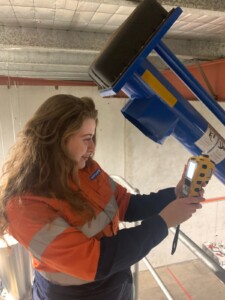
Airsafe Laboratories conducted a thorough assessment of the workplace to determine the levels of these gases present and their potential impact on employee health. The assessment involved strategically placed gas monitors and sampling devices to capture real-time data on gas concentrations.
The data collected during the assessment was carefully analysed by Airsafe’s team of experts. They compared the results with relevant regulatory standards and guidelines to assess the level of risk posed by each gas. Additionally, Airsafe provided comprehensive recommendations to mitigate any identified risks and improve workplace safety.
The monitoring process involved the following key steps:
- Identification of Hazards: Airsafe Laboratories worked closely with the plant management to identify the specific hazardous gases present within the premises. This included gases such as carbon monoxide (CO), carbon dioxide (CO2), nitrogen dioxide (NO2), hydrogen sulphide (H2S), sulphur dioxide (SO2), and others.
- Selection of Monitoring Points: Based on the identified hazards and plant layout, Airsafe Laboratories strategically determined the locations for gas monitoring points. These points are strategically placed in areas where gas concentrations are expected to be highest or where employees may be most exposed to potential risks.
- Installation of Gas Monitors: Airsafe Laboratories installed advanced gas monitoring equipment at the designated monitoring points. These monitors are capable of real-time gas detection, providing continuous monitoring and immediate alerts if hazardous gas concentrations exceeded predefined thresholds.
- Calibration and Validation: Before deployment, the gas monitors were calibrated and validated to ensure accurate measurements. This step involved adjusting the monitoring equipment to provide precise readings based on known gas concentrations and verifying the reliability of the monitoring devices.
- Data Collection and Analysis: The gas monitors continuously measured the concentrations of hazardous gases in the plant environment. The collected data was then analysed by Airsafe Laboratories’ experienced professionals, who compared the readings against regulatory limits and established exposure guidelines.
- Reporting and Recommendations: Based on the analysis of gas concentration data, Airsafe Laboratories generated a comprehensive report that outlined the findings and provided recommendations for mitigating potential risks. These recommendations included implementing engineering controls, modifying work processes, enhancing ventilation systems, or providing suitable personal protective equipment (PPE) to employees.
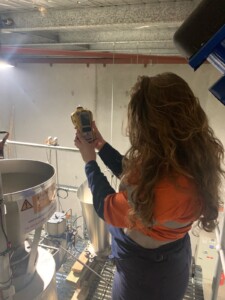
The biochar pilot plant management, upon receiving the gas monitoring assessment report, was able to take proactive measures to address potential hazards. By implementing the recommended control measures, including improved ventilation systems, employee training, and appropriate personal protective equipment (PPE), the plant significantly reduced the risk of gas-related health issues for its workers.
With its state-of-the-art monitoring equipment and experienced professionals, Airsafe Laboratories continues to be a trusted partner in providing accurate and reliable gas monitoring solutions. By utilising their services, organisations can meet regulatory requirements, safeguard employee health, and demonstrate their commitment to maintaining a safe work environment.
For more information about Airsafe Laboratories’ occupational health services and how they can benefit your organisation, please contact our team today!
Airsafe Laboratories, a leading provider of occupational health and environmental consulting services, recently completed a comprehensive occupational exposure assessment at a quarry located in the picturesque Southern Highlands of NSW. The assessment involved conducting dust exposure monitoring and noise exposure monitoring to ensure the health and safety of workers in this dynamic industrial environment.
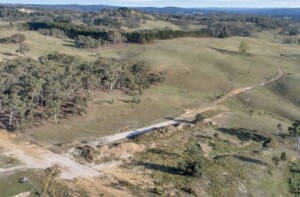
An occupational exposure assessment is a systematic evaluation of potential hazards and risks present in a workplace that could affect the health and safety of workers. It involves the identification, measurement, and analysis of various physical, chemical, biological, and ergonomic agents or stressors that workers may be exposed to during their job tasks.
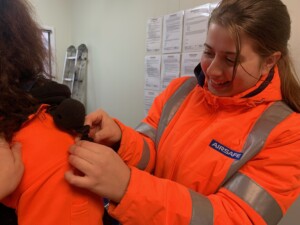
The primary goal of an occupational exposure assessment is to understand and quantify the levels of exposure to these agents or stressors and determine if they pose a risk to workers’ health. By assessing exposures, organisations can identify potential hazards, evaluate the effectiveness of existing control measures, and implement necessary measures to prevent or minimise health risks.
Dust Exposure Monitoring: Airsafe Laboratories utilised state-of-the-art monitoring equipment and sampling techniques to assess the levels of airborne dust particles present at various locations within the quarry. The goal was to evaluate the potential risks associated with respirable dust, such as silica, which can pose significant health hazards if inhaled. By monitoring and analysing the dust concentrations, Airsafe Laboratories provided valuable insights into the effectiveness of control measures and recommended strategies for minimising worker exposure to dust particles.
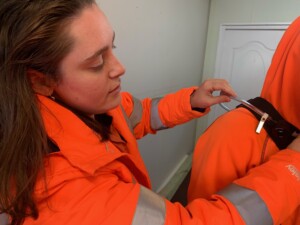
Noise Exposure Monitoring: In addition to dust monitoring, Airsafe Laboratories also conducted comprehensive noise exposure monitoring to assess the sound levels generated by machinery and operations within the quarry. Excessive noise exposure can lead to hearing loss and other related health issues. Through precise measurements and analysis, Airsafe Laboratories helped identify areas of concern and provided recommendations for noise control measures and personal protective equipment to ensure a safe and healthy working environment for the quarry’s workforce.
The assessment conducted by Airsafe Laboratories adhered to rigorous industry standards and guidelines, ensuring the accuracy and reliability of the results. The experienced occupational hygienists employed advanced monitoring techniques and employed their expertise to interpret the data, providing meaningful insights to the quarry management.
The results of the occupational exposure assessment enabled the quarry management to take proactive steps to further improve the health and safety practices on-site. By addressing the identified risks and implementing the recommended control measures, the quarry aims to create a healthier and more productive workplace for its employees.
For more information about Airsafe Laboratories’ occupational health services and how they can benefit your organisation, please contact our team today!
Airsafe Laboratories, a renowned provider of occupational health and safety services, offers comprehensive audiometric testing solutions for workplaces in New South Wales (NSW). With a strong commitment to safeguarding employee health and ensuring regulatory compliance, Airsafe Laboratories is at the forefront of promoting a safe and healthy working environment.
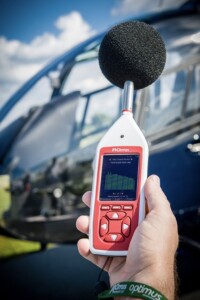
Under Clause 58 of the NSW Work Health and Safety Regulation, employers are required to conduct regular audiometric testing for employees exposed to noise levels exceeding prescribed limits. This regulation aims to protect workers from the potential hazards of excessive noise and prevent noise-induced hearing loss, a common occupational health concern.
Recognising the importance of compliance and the impact of noise exposure on employee well-being, Airsafe Laboratories offers a comprehensive range of audiometric testing services tailored to the needs of various industries and workplaces. With a team of highly skilled and accredited professionals, Airsafe Laboratories ensures accurate and reliable testing results, helping employers identify potential risks and implement effective control measures.
“Our priority at Airsafe Laboratories is to help employers create safe and healthy work environments for their employees,” said John Bouwman, owner of Airsafe Laboratories. “With our audiometric testing services, we assist organisations in meeting their legal obligations while protecting their most valuable asset – their employees’ hearing health.”
Airsafe Laboratories utilises state-of-the-art equipment and follows industry best practices to conduct thorough and efficient audiometric testing. The process involves a series of hearing tests, including pure-tone audiometry and speech audiometry, performed by qualified professionals. The results are meticulously analysed, and comprehensive reports are provided to employers, enabling them to make informed decisions regarding hearing conservation strategies and workplace noise control.
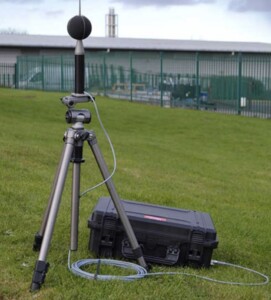
By partnering with Airsafe Laboratories for audiometric testing, NSW employers can ensure compliance with regulatory requirements and demonstrate their commitment to the well-being of their workforce. With extensive experience in occupational health and safety, Airsafe Laboratories brings expertise and reliability to every testing engagement, supporting organisations across a wide range of industries, including manufacturing, construction, mining, and more.
For more information about Airsafe Laboratories’ audiometric testing services or to request a consultation, contact our dedicated team. Take proactive steps towards protecting your employees’ hearing health and complying with the NSW regulations by choosing Airsafe Laboratories as your trusted partner in occupational health and safety.
Australia is known for its diverse natural landscapes but hidden within the soil lies a lesser-known risk: naturally occurring asbestos. Asbestos, a group of fibrous minerals known for their heat resistance and durability, can pose serious health risks when its fibres become airborne and are inhaled. While asbestos is typically associated with building materials, it is essential to be aware of the presence of naturally occurring asbestos in certain areas across Australia.

Naturally occurring asbestos refers to asbestos minerals that exist in the environment, often found in rock formations or soils. Australia is unique in that it has significant deposits of naturally occurring asbestos, particularly in regions such as New South Wales, Queensland, and Western Australia. These deposits pose a potential health hazard, as the asbestos fibres can become airborne through natural weathering processes, mining activities, or human disturbance.
Exposure to airborne asbestos fibres, whether from naturally occurring or manufactured sources, can lead to serious health conditions, including asbestos-related lung diseases such as asbestosis, lung cancer, and mesothelioma. Therefore, it is crucial to understand the risks associated with naturally occurring asbestos and take appropriate safety measures to protect public health.
Recognising the importance of addressing this issue, Airsafe Laboratories is committed to raising awareness about naturally occurring asbestos and providing comprehensive solutions to manage associated risks. With our expertise in asbestos testing and consulting services, we aim to assist individuals, communities, and businesses in mitigating the potential health hazards associated with naturally occurring asbestos.
Our specialised team of experts at Airsafe Laboratories conducts thorough testing and analysis to identify the presence of asbestos fibres in various environmental samples, including soil, air, and building materials. By utilising state-of-the-art equipment and following strict protocols, we ensure accurate and reliable results, enabling informed decision-making when it comes to asbestos management.
In addition to testing services, Airsafe Laboratories offers tailored consulting and risk assessment services to assist clients in understanding the potential risks posed by naturally occurring asbestos. Our team collaborates closely with clients, providing them with detailed reports, guidance on safe work practices, and recommendations for effective asbestos management strategies.
When it comes to naturally occurring asbestos, prevention and proactive measures are key. If you reside or operate in areas known to have naturally occurring asbestos deposits, it is essential to take precautions to minimise exposure risks. These measures may include:
- Site Assessments: Conducting thorough site assessments to identify areas at risk of naturally occurring asbestos exposure.
- Monitoring and Testing: Regular monitoring of airborne asbestos fibres and comprehensive testing of soil, air, and building materials to assess asbestos contamination levels.
- Safe Work Practices: Implementing appropriate safety protocols, including dust control measures, personal protective equipment (PPE), and proper handling procedures for any potential asbestos-containing materials.
- Awareness and Education: Promoting awareness among employees, residents, and stakeholders about the risks associated with naturally occurring asbestos and providing training on safe practices.
As a trusted and accredited laboratory, Airsafe Laboratories remains dedicated to delivering the highest standards of asbestos testing and consulting services. We prioritise the health and safety of our clients and the community, offering reliable solutions to address the challenges posed by naturally occurring asbestos.
For more information on naturally occurring asbestos, its risks, and how Airsafe Laboratories can assist you in managing these risks, please contact our knowledgeable team.
Occupational hygiene is the science of anticipating, recognising, evaluating, and controlling workplace hazards that may affect the health and well-being of workers. It involves identifying and assessing workplace hazards, such as chemical, physical, biological, and ergonomic hazards, and implementing effective control measures to eliminate or minimise them.
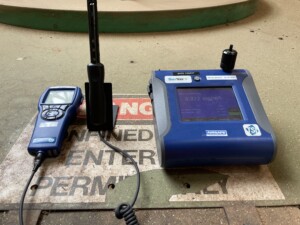
The goal of occupational hygiene is to ensure that workers are not exposed to harmful substances or conditions that can cause illness, injury, or long-term health effects. By implementing effective occupational hygiene practices, companies can create a safe and healthy work environment for their employees, reduce the risk of accidents and illnesses, and increase productivity and morale.
One of the key elements of occupational hygiene is risk assessment. This involves identifying and evaluating the hazards that exist in the workplace, determining the level of risk they pose to workers, and implementing appropriate control measures to reduce or eliminate the risk. Risk assessments should be conducted regularly, and any new hazards or changes to existing hazards should be identified and assessed as they arise.
Another important aspect of occupational hygiene is monitoring. This involves measuring the levels of hazardous substances or conditions in the workplace and ensuring that they are within safe limits. Monitoring can include air sampling, noise monitoring, vibration monitoring, and other types of measurements depending on the nature of the hazards present.
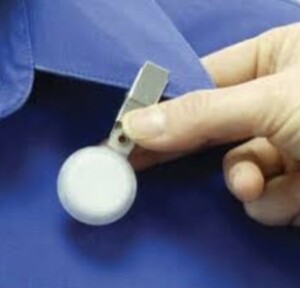
Control measures are the third key element of occupational hygiene. Once hazards have been identified and assessed, effective control measures must be implemented to reduce or eliminate the risk to workers. Control measures can include engineering controls, administrative controls, and personal protective equipment (PPE). Engineering controls involve modifying the workplace or equipment to eliminate or reduce the hazard, while administrative controls involve changing work practices or procedures to minimise exposure to the hazard. PPE, such as respirators, gloves, and protective clothing, can be used as a last line of defence when other control measures are not sufficient.
In summary, occupational hygiene is a critical aspect of workplace safety and health. By identifying and assessing workplace hazards, monitoring exposure levels, and implementing effective control measures, companies can create a safe and healthy work environment for their employees. This not only benefits the workers but also the company, by reducing the risk of accidents and illnesses, improving productivity and morale, and ensuring compliance with regulatory requirements.
At Airsafe Laboratories, we provide a range of occupational hygiene services to help companies meet their workplace safety and health obligations. Our team of experienced professionals can assist with risk assessments, monitoring, and the implementation of effective control measures. Contact us today to learn more about how we can help you create a safer and healthier workplace for your employees.
Asbestos and other hazardous materials are commonly found in buildings constructed before the 1990s. These materials can pose serious health risks if disturbed, particularly during demolition projects when they can become airborne. To protect workers and the general public from these dangers, it is essential to have a comprehensive dust control plan in place. Airsafe, a leading occupational hygiene and environmental consulting firm, can provide companies with the expertise they need to minimize the risks associated with airborne dust during demolition.
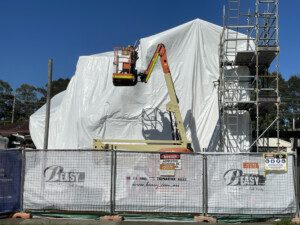
When asbestos and other hazardous materials are disturbed during demolition, they can release microscopic fibres into the air that can be inhaled by workers and bystanders. These fibres can lead to serious health problems, including lung cancer, mesothelioma, and other respiratory diseases. A comprehensive dust control plan that includes measures to control the release of dust and fibres is critical to ensure the safety of workers and the general public.
Airsafe’s team of experts can help companies develop and implement a dust control plan that is tailored to the specific needs of their project. This plan typically includes measures such as wetting down the demolition site to minimize dust release, using negative air pressure to keep dust from spreading to adjacent areas, and using specialized equipment to capture and contain airborne dust particles. Airsafe can also provide air quality monitoring services to ensure that the levels of airborne dust are kept within safe limits.
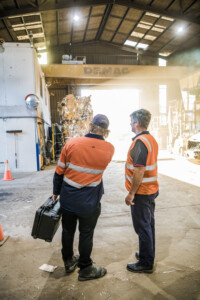
Airsafe’s dust control services are provided by experienced professionals with specialized training in occupational hygiene and environmental management. The company has over 30 years of experience working with clients in a wide range of industries, including construction, mining, manufacturing, and transportation.
By partnering with Airsafe, companies can ensure that their demolition projects are conducted safely and in compliance with regulatory requirements. Airsafe’s experts can assist in all aspects of occupational hygiene and environmental management, including dust control during demolition projects. Contact Airsafe today to learn more about how they can help with your demolition project.
For any questions about Dust Control Plans on your next demolition project, call Airsafe on 1300 888 338.
Silica exposure has become a major concern for workers in many industries, including construction, mining, and manufacturing. Silica, also known as quartz, is a common mineral found in rocks, soil, and sand. When these materials are disturbed, such as during drilling, cutting, or grinding, silica particles can become airborne and be inhaled by workers. Prolonged exposure to silica can lead to serious health issues such as silicosis, lung cancer, and other respiratory diseases.

To protect workers from these harmful particles, employers are required to monitor the air quality in their workplaces and implement measures to control exposure. This includes conducting regular air monitoring to measure the concentration of silica particles in the air, as well as implementing engineering and administrative controls to limit worker exposure.
Air monitoring is a critical tool for assessing worker exposure to silica. By measuring the concentration of silica particles in the air, employers can determine if workers are at risk of overexposure and take appropriate steps to reduce their exposure. Air monitoring is typically conducted using specialized equipment such as personal air samplers, which are worn by workers to measure the amount of silica particles they are inhaling, or area air samplers, which are placed in specific locations to measure the concentration of silica in the air.
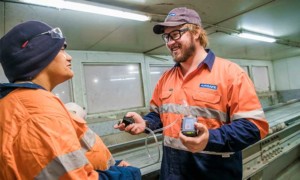
In addition to air monitoring, employers must also implement engineering and administrative controls to limit worker exposure to silica. Engineering controls include using tools and equipment that are designed to minimize the release of silica particles into the air, such as water suppression systems, dust collectors, and ventilation systems. Administrative controls include measures such as limiting worker exposure time, providing respiratory protection, and training workers on the hazards of silica exposure.
Safework Australia has established an exposure standard for silica to protect workers from the harmful effects of overexposure. The current exposure standard for silica is 50 micrograms per cubic meter of air, averaged over an eight-hour workday. Employers must ensure that their workers are not exposed to levels of silica above the exposure standard, and must take action to reduce exposure if levels exceed this limit.
Employers are also required to provide workers with respiratory protection if exposure to silica cannot be adequately controlled through engineering and administrative controls. Respiratory protection includes the use of respirators such as N95 masks, powered air-purifying respirators, or supplied-air respirators, depending on the level of exposure and the specific job tasks being performed.
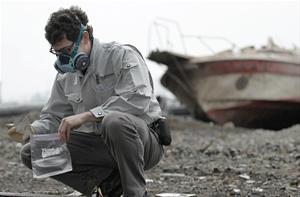
Employers must also train their workers on the hazards of silica exposure and the measures in place to protect them. This training must cover topics such as the health effects of silica exposure, the proper use and maintenance of respiratory protection, and the importance of reporting any symptoms of illness related to silica exposure.
In addition to protecting workers, implementing measures to control silica exposure can also benefit employers by reducing healthcare costs, increasing productivity, and improving overall worker morale and satisfaction.
Air monitoring for silica exposure is a critical component of any workplace safety program. By monitoring the air quality in their workplaces and implementing measures to control exposure, employers can ensure that their workers are protected from the harmful effects of silica exposure. Workers have the right to work in a safe and healthy environment, and it is the responsibility of employers to provide this. By taking proactive steps to protect their workers from silica exposure, employers can create a safer and healthier workplace for all.
If you are concerned about silica exposure in your workplace, speak to your employer or occupational health and safety representative. They can provide information on the specific measures in place to protect workers from silica exposure, as well as any training or resources available to help you stay safe on the job.
Airsafe can also provide Respirable Crystalline Silica monitoring solutions.
For any questions about Respirable Crystalline Silica monitoring, call Airsafe on 1300 888 338.
As professionals, we all want to ensure that our workplaces are safe and healthy for ourselves and our colleagues. Unfortunately, many industries involve processes that generate harmful fumes and particles, such as welding. Welding is a vital process that is used in numerous industries, but it also poses significant health risks to workers, especially if they are not adequately protected from the harmful fumes generated during the process.
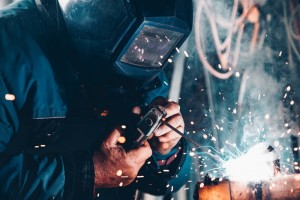
Welding fumes are a complex mixture of gases and fine particles that can be inhaled by workers and cause respiratory problems, lung cancer, and other health issues. To protect workers from overexposure, regulatory agencies have established permissible exposure limits for welding fumes. However, many workers may still be at risk of exposure if proper safety measures are not in place.
As safety professionals, we have a responsibility to monitor exposure to welding fumes and take proactive steps to protect workers from harm. Here are some reasons why monitoring exposure to welding fumes is critical and what steps we can take to reduce exposure.
Firstly, monitoring exposure to welding fumes can help identify areas of concern and provide data to inform safety measures. Exposure assessments can be conducted using state-of-the-art monitoring equipment to collect data on the types and levels of welding fumes present in the air. The data collected can be analyzed to identify areas of concern, develop recommendations for reducing exposure and implement appropriate control measures.
Secondly, monitoring exposure to welding fumes can help reduce the risks associated with welding fume exposure. By monitoring exposure levels, safety professionals can assess whether workers are at risk of overexposure and take steps to mitigate those risks. This could involve implementing measures such as improving ventilation, using personal protective equipment, or introducing engineering controls to reduce exposure.
Finally, monitoring exposure to welding fumes can help ensure that workplaces are compliant with safety regulations. Regulatory agencies have established exposure limits for welding fumes to protect workers from overexposure. By monitoring exposure levels, safety professionals can ensure that these regulations are being met and that workers are not at risk of harm.
Monitoring exposure to welding fumes is critical to ensuring that workplaces are safe and healthy for workers. By conducting exposure assessments, identifying areas of concern, and implementing appropriate control measures, we can reduce the risks associated with welding fume exposure. As safety professionals, it is our responsibility to prioritize the health and safety of workers and ensure that we are taking proactive steps to protect them from harm.
Contact us for a welding fumes risk assessment today
Airsafe’s trained and qualified occupational hygienists can be dispatched today to conduct exposure monitoring and provide recommendations on health monitoring.
For any questions about welding fumes, call Airsafe on 1300 888 338.
Passive sampling is a method of environmental monitoring that uses a collecting medium to accumulate chemical pollutants in the environment over time. In contrast, grab sampling involves taking a sample directly from the media of interest at a specific point in time. Passive sampling calculates average chemical concentrations over the deployment time of a device, eliminating the need to visit a sampling site multiple times to collect multiple representative samples.
The flow of contaminant molecules or ions from the sampling medium (air or water) onto a collecting medium is the underlying principle of passive sampling (the passive sampler).
Passive sampling differs from grab sampling, which is the collection of an air, water, or soil sample for direct analysis for contaminants. Unlike passive sampling devices, these samples represent a single point in time and provide information about contaminant concentration at that point in time.
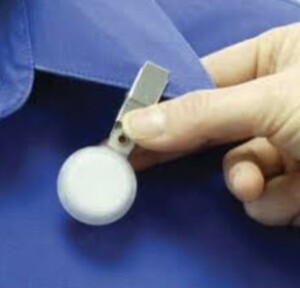
What are the advantages?
Passive sampling contaminant concentrations reflect average contamination throughout the sampler deployment time, implying that the sample will capture contaminant concentration fluctuations throughout the deployment period. Traditional grab sampling does not accomplish this because collected samples only represent a single point in time, and multiple grab samples are required to observe variation in contaminant concentrations over time.
Due to the concentration of the chemicals on the sampler over time, this integrative sampling method can also result in the detection of chemicals present at such low concentrations that they would be undetected in a grab sample. As a result, passive sampling has the potential to be less time-consuming, less costly, and more accurate than grab sampling.
Furthermore, passive samplers are frequently simple to use and deploy, have no pumps or moving parts, and do not require electricity. They can also be inexpensive and simple to build.
A case study
Airsafe was contacted by a lab supply company that delivers various solvents to laboratories throughout Australia. The client has particular concerns about air quality in relation to Xylene, formaldehyde and isopropylene.
The work process on-site involved personnel decanting from Intermediate bulk containers into small bottles.
Airsafe’s occupational hygienist conducted a Preliminary site investigation. The walk-through survey gathered preliminary information, assessed potential chemical, physical, biological and ergonomic hazards within the workplace; and noted the presence, performance or absence of hazard control.
Airsafe’s occupational hygienist subsequently conducted exposure monitoring using passive samplers. Sampling was carried out in line with the requirements of Australian Standard AS 2986.1- 2006 – Workplace air quality, Sampling and analysis of volatile organic compounds by solvent desorption/gas chromatography.
The results indicated an exceedance in exposure compared to the Australian exposure standards.
Airsafe provided recommendations to prevent exposure to personnel onsite.
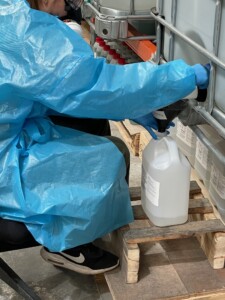
How can Airsafe help?
Analyse base line exposure monitoring results.
The placement of the equipment is critical to the overall sampling strategy and interpretation of results.
Provide guidance on requirements for ongoing monitoring.
Monitoring of a worker’s health is legally required when the hazard has the potential to exceed exposure limits or the level of risk from the hazard varies.
Section 49 of the Work Health Regulation 2017 states that a person conducting a business or undertaking at a workplace must ensure that no person at the workplace is exposed to a substance or mixture in an airborne concentration that exceeds the exposure standard for the substance or mixture.
Detail corrective actions to control generation of and limit worker exposure.
Where possible, you should always try to remove or eliminate hazards from the workplace, for example by using a different process, or changing the way a job is done.
Need help with a workplace assessment? Call Airsafe on 1300 888 338.
An asbestos register is a centrally managed document that identifies all asbestos-containing materials or suspected asbestos-containing materials found within a structure or workplace.
It is legally required (Work Health and Safety Regulation) if the workplace is a building built before December 31, 2003, if asbestos has been identified, or if there is a reasonable suspicion that asbestos may be present.
An asbestos register should include the following information:
- records of any asbestos assumed or identified,
- the date it was identified, as well as the location, type, and condition of the asbestos;
- Information on asbestos-containing materials (ACMs) that is up to date;
- A statement confirming that no asbestos has been found if this is the case.
In October 2022 Airsafe performed an asbestos register and risk assessment for a large multinational in Papua New Guinea.
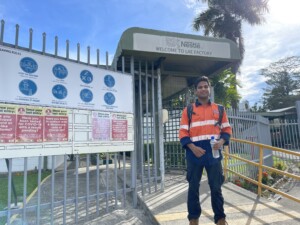
At the time of the inspection, the facility was occupied and operational.
As there are currently no regulations for asbestos that is fixed or installed in buildings the company has determined in accordance with best practices to have an asbestos register for the site.

An Airsafe licensed asbestos assessor attended the site and undertook the assessment. The report included:
- The type of asbestos-containing materials
- The location of the asbestos-containing materials
- Whether the asbestos-containing material is friable or non-friable and
- The condition of the asbestos-containing material.
From all reports, the client was satisfied with the outcome.
Airsafe’s licensed asbestos assessors are experienced in creating and maintaining asbestos registers and management plans. We’ve created asbestos registers for workplaces throughout Australia and in fact overseas! From factories, office buildings and small businesses to councils, government departments and universities.
To discuss asbestos registers, specific to your needs please contact us today on 1300 888 338.